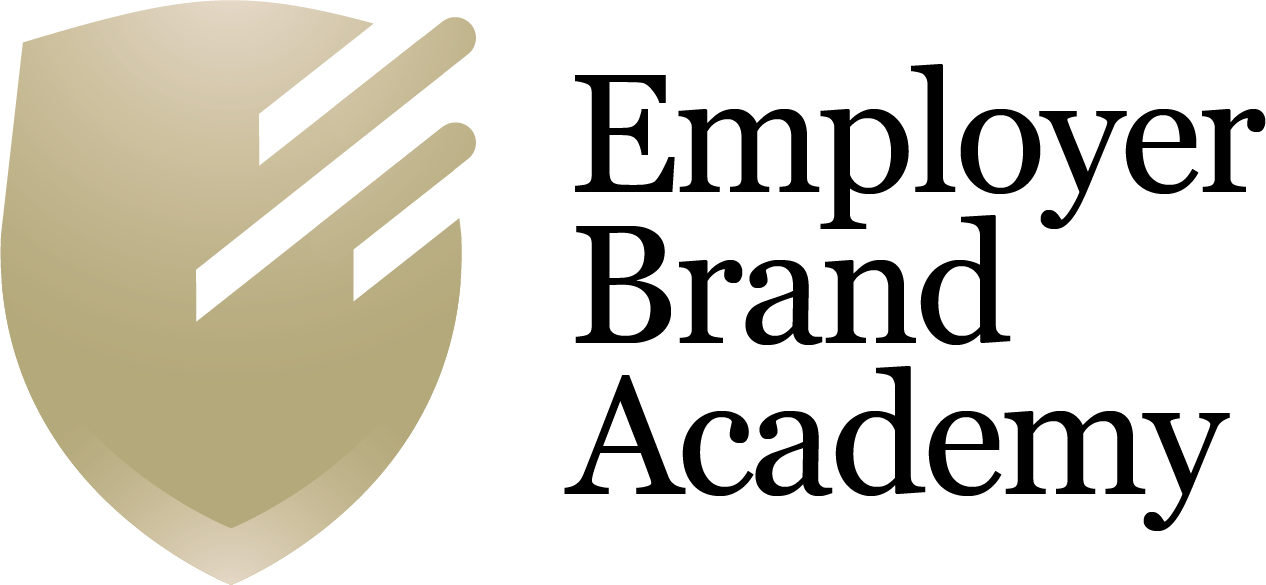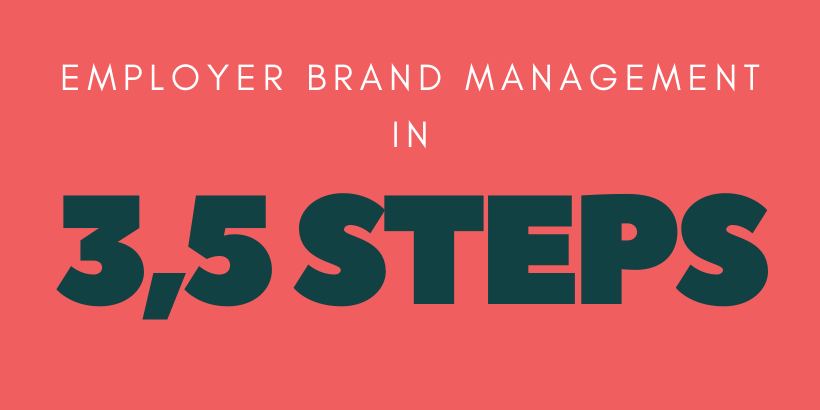Developing an employer brand strategy is crucial for organizations in attracting and retaining top talent. Moreover, an employer brand is the reputation of a company as an employer, reflecting its culture, values, and work environment. Additionally, it is what differentiates the organization from its competitors and influences potential employees’ decisions to work for them.
As you develop your employer brand strategy, it can take a lot of time and become frustrating to list and prioritize the to-do list. However, to help streamline the process, we recommend a step-by-step approach. Specifically, we have refined through the management of more than 200 employer brand projects. In this guide, we will walk you through the process of developing and implementing an employer brand strategy in 3.5 steps.
STEP 1- Discovery
The first step is to check and understand the current status of the employer brand. To elaborate, this step includes the following.
1A- The team
Form a steering committee with representatives from all the departments. It is essential to have a diverse team to ensure that all perspectives are taken into account.
1B- Examination
Examine the organization’s current HR practices and procedures from sourcing to exit interviews. It is important to know how the organization approaches talent acquisition, onboarding, performance management, and other related HR functions.
1C- Analysis
Analyze data from surveys and social media to understand the employer brand’s current perception. Conduct a Graduate Survey, candidate experience survey, onboarding survey, exit interviews, turnover reports, employee satisfaction and/or engagement survey, social media reports, etc.
1D- Benchmarking
Analyze the competitors, not just in the same industry but also the competitors who are targeting the same talent as the organization.
Conduct market research to gain insights into the competitive landscape, including benchmarking against other employers in the industry.
Identify best practices and areas for improvement based on external research, and use this information to inform the development of the employer brand strategy.
1E- Inspection
Conduct one-to-one meetings and focus groups, especially with top management, to gain their perspective.
1F- Reporting
Once you collect and analyze all the data, prepare the interim report and present it to the steering committee.
STEP 2- Development
The second step is to define the target candidate persona, develop the Employee Value Proposition (EVP), and create creative work to attract and keep extraordinary talent. This step includes the following.
2A- Kickstart workshop
Start with a kickstart workshop where you present the interim report and discuss the future, vision of the company, and how to align the talent force according to the organization’s business.
2B- Define candidate persona
Define the candidate persona starting with the overall qualities required to achieve the business goals in the corporate vision. Ask questions such as:
- Who do we want to attract into our organization?
- What kind of people will fit in our organization?
- What skills and competencies do they need to have to take the organization to its future vision?
2C- Develop the EVP
In this process, we develop a brand messaging platform that outlines the key messages and themes that will be used to communicate the employer brand to the target audience. It will ensure that the brand messaging is consistent across all channels and touchpoints, including job postings, career websites, social media profiles, and employee communications.
After defining the generic candidate persona, start putting the offer together to attract this person to the organization. Answering the following questions will form the EVP.
- What makes the organization special as an employer?
- Why people should join, stay and commit?
- What can the organization offer to attract the target group of employees and retain them engaged?
2D- Transform HR practices
Transform the HR practices to deliver the employee experience promised by the EVP.
STEP 3- Implementation
The third and most difficult step is the implementation stage. The implementation phase involves transforming the EVP into a tangible experience for employees, which can be done by applying it to all touchpoints from sourcing to exit interviews. You can include creating an employer brand book, which serves as a guideline for all employer brand initiatives. Furthermore, this can be used as a tool to train new employees. It is a long journey and requires a significant amount of effort to execute. During this stage, it is important to maintain consistency in the messaging and delivery of the EVP across all channels. The key is to align the company culture, recruitment, and retention efforts with the EVP. The following are some examples for the steps most popularly involved.
3A- Sourcing
Review the recruitment channels and make sure that the messaging aligns with the EVP. All job postings, company websites, and social media profiles should be updated to reflect the EVP.
3B- Onboarding
The onboarding process should be revamped to ensure that the new employees have a good experience from the start.
3C- Performance management
You should align the performance management process with the EVP to ensure two goals. First, to ensure that the employees are consistently meeting the employer’s expectations. Second, to take the employee’s personal and professional goals into consideration. Additionally, you must establish a culture of recognition and rewards to reinforce the EVP and drive engagement.
3D- Employee advocacy
Employee engagement and thus employee advocacy are critical for sustaining the employer brand over time. To achieve this, it can involve the following.
- Creating opportunities for employees to share their stories and experiences, such as through social media or internal communication channels.
- Providing regular feedback and recognition to employees who embody the employer brand and act as brand ambassadors.
- Encouraging employees to act as brand advocates by sharing their experiences and recommending the organization to their networks.
STEP 3.5: Measurement & Optimization
Lastly, you measure and optimize the employer brand strategy on an ongoing basis. With regular monitoring, you can identify what is working well and what you need to improve or eliminate. The best way to measure the effectiveness of an employer brand strategy is to track key performance indicators (KPIs). For instance; this could be employee engagement, retention rates, and employee referrals. By consistently measuring and optimizing the strategy, an employer can maintain a competitive edge and attract top talent.
Why did we call this article ‘3.5 steps’? It outlines three main steps in developing an employer brand strategy, while the final step is more of a supporting component. We gave it the name ‘3.5 steps’ to differentiate it from the other steps, while still emphasizing its importance. It’s a crucial part of the process, but with a slightly different focus.
Conclusion
Building an employer brand strategy is a long-term investment that requires commitment and consistency. By developing an authentic EVP that resonates with employees and aligning it with the company culture, recruitment, and retention efforts, an employer can differentiate itself and attract and retain top talent. With the right employer brand strategy in place, organizations can create a competitive advantage, and build a culture that attracts top talent and delivers sustainable business success.
Looking for a user-friendly and effective way to develop a winning employer brand strategy that aligns with your organization’s values and goals? Check out our free, comprehensive e-book at Employer Brand Academy, which provides step-by-step guidance, real-world examples, and a proven checklist to simplify the process.
—
If you like what you’ve read, please feel free to share this post on your preferred channels.
If you have a question or have had a similar experience, please leave a comment below so that fellow employer brand professionals can learn from your experiences.


